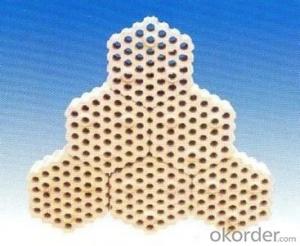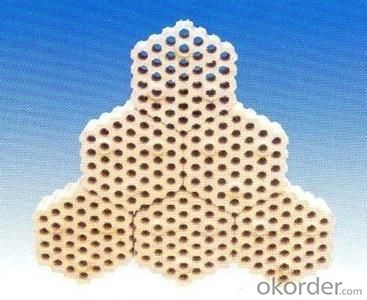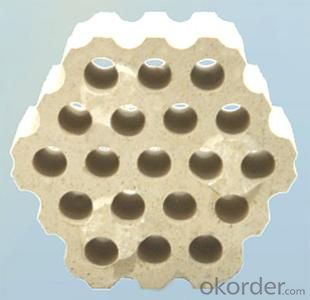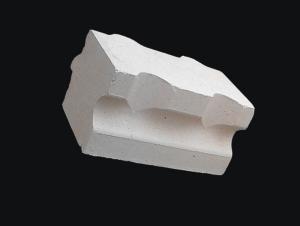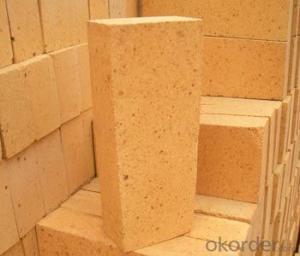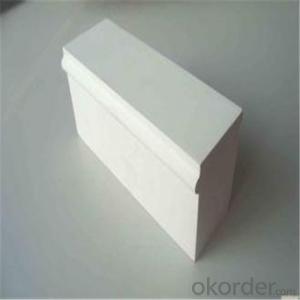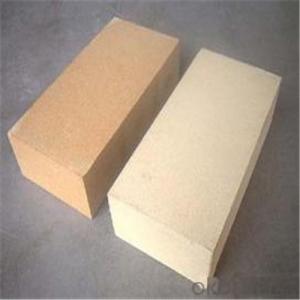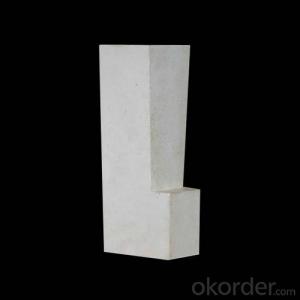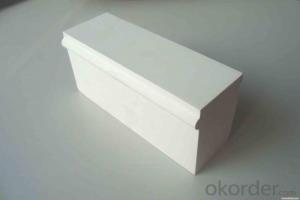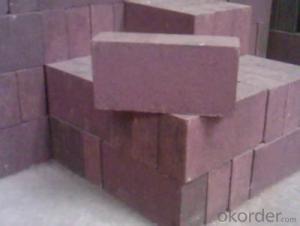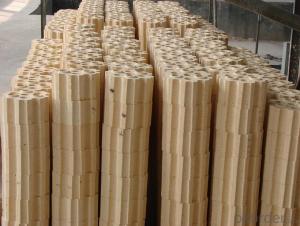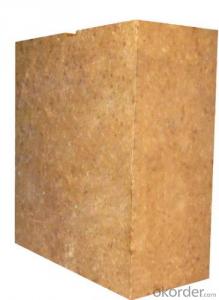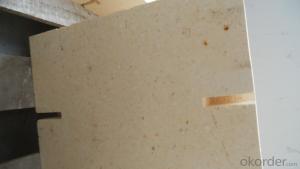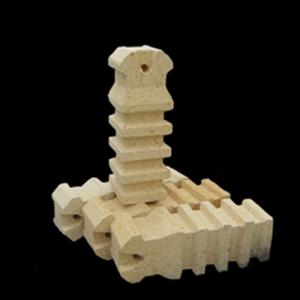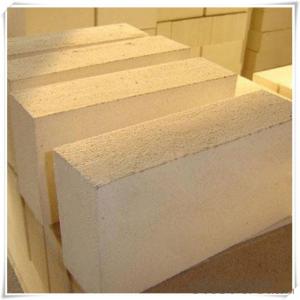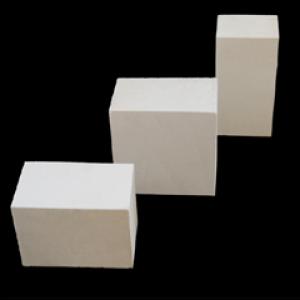Corundum Brick - Low Creep High Alumina Checker CNBM Made in China
- Loading Port:
- Shanghai
- Payment Terms:
- TT OR LC
- Min Order Qty:
- 50000 m.t.
- Supply Capability:
- 5000 m.t./month
OKorder Service Pledge
OKorder Financial Service
You Might Also Like
Specifications
Low creep high alumina brickcertified by ISO
low porosity
good compressive strength
good corrosion resistance
low creep rate
high alumina excellent appearance checker brick
Feature:
1. bricks are made from high quality bauxite
2. dry pressed
3. burned under tunnel kiln
4. accurate dimension
5. high strength
Product specification:
standard form, normal standard, shaped and special shaped bricks.Can be used in various kilns because of its cheapness and general tray package. Among all of the refractory materials, it is the mostly used in the key positions.Molding method: it has down draft kiln and tunnel kiln and the general sintering temperature is 1360-1480 degrees. It is a kind of aluminosilicate refractory product which aluminum oxide (Al2O3) content is higher than 48%.
Applications:
1. Steel furnaces
2. Iron making furnaces
3. Glass kiln
4. Ceramic tunnel kiln
5. Cement kiln
Specifications:
High aluminum refractory bricks physiochemical index
High-Al bricks used in blast rurnaces has certified by ISO.
Property:fine structure,low porosity, good compressive strength, good corrosion resistance ,excellet thermal shock reisitance and low creep rate.
Brand Items | Low creep high alumina bricks | |
DRL-145 | DRL-140 | |
Al2O3% (more than) | 75 | 65 |
Fe2O3%(less than) | 2.2 | 2.3 |
BDg/cm3 | 2.55 | 2.5 |
AP% (less than) | 18 | 19 |
CCSMpa (more than) | 75 | 65 |
Refractoriness°C (more than) | 1790 | 1770 |
0.2Mpa RUL | 1530 | 1510 |
RLC% | -0.2 | -0.2 |
High temperature creep rate | 1450°C 0.8 | 1400°C 0.8 |
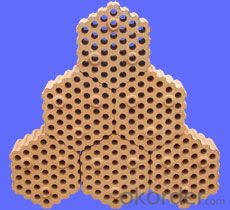
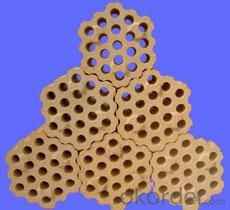
- Q: What kind of fused corundum corundum brick should be used for each part of the glass furnace?
- In addition to AZS33# and AZS same co crystallization in vitro, 36#AZS due to the increase of chain like zirconia brick more crystals, while the glass phase content is low, so 36# AZS corrosion resistance has been further enhanced, so is suitable for the rapid flow of molten glass or high temperature region.AZS36 s is an excellent product in the AZS series. It has high resistance to glass liquid erosion and low pollution. It is usually used in the key parts of the glass furnace, such as the pool wall near the hot spot.
- Q: What are the advantages of refractories?
- Acid refractory material usually refers to refractories with SiO2 content greater than 93%. Its main characteristic is that it can resist acid slag corrosion at high temperature, but it is easy to react with alkaline slag.
- Q: What does refractory consist of?
- According to the shape of the product is shaped and unshaped refractory materials two categories, according to the chemical properties of acidic, neutral and alkaline refractory materials three categories, commonly used as refractory material of alkaline and neutral, such as magnesia, alkaline burned magnesia brick, magnesia chrome brick, magnesia calcium brick, high alumina brick, corundum neutral brick, clay brick, including: unshaped castable, ramming material, gunning material, coating material, dry vibration material etc..
- Q: What is the blast furnace ceramic cup called by the refractory factory?
- The refractory bricks, which are suitable for blast furnace conditions, are vitrified by high temperature sintering. They are like a huge cup, so they are called ceramic cups. The name was taken by the French, and the technology was handed down from france!
- Q: How to improve the induction furnace campaign, from the promotion of refractory life start
- According to the use of atmosphere, choose the appropriate spraying materials, such as infrared radiation paint
- Q: What is the standard classification of high alumina bricks and high alumina bricks?
- Refractory brick is non-metallic materials can be classified according to a kind of inorganic material, high aluminum brick, clay brick, magnesia brick, corundum brick, mullite bricks, silicon carbide materials such as brick, high alumina brick is used as a relatively wide range of products in accordance with the refractory brick high alumina refractory materials by high aluminum brick is generally divided into Al2O3 content three: I - II - >75% Al2O3 content; the content of Al2O3 is 60 ~ 75%; III - Al2O3 content from 48 to 60%.
- Q: High temperature refractory material?
- Acid refractory with silicon oxide (SiO2) as the main ingredient, commonly used are silica brick and clay brick is siliceous. Products containing more than 93% SiO2, the use of raw materials with silica, silica and other waste brick. Acid slag erosion ability is strong, but vulnerable to the erosion of basic slag, its softening temperature is very high that is close to the refractory, the volume does not shrink after repeated burning, or even a slight swelling, but the thermal shock stability. Silica is mainly used for thermal equipment of coke oven, glass furnace, furnace and other acidic silica brick, according to the physicochemical indexes and SiO2 content can be divided into several levels, mainly brick for glass furnaces and used for coke oven two kinds of brick clay brick. With refractory clay or bauxite clinker as main raw material, containing 30% to 46% of alumina, refractory degrees 1580 to 1770 DEG C, weak acid refractory material, heat shock resistance, resistance to acid slag, wide application Pan, clay brick with refractory clay as main raw material is called ordinary clay brick, made with bauxite clinker as main raw material, the porosity in the clay brick below 17% is called low porosity clay brick. Two kinds of clay brick and according to the physicochemical indexes which were divided into several grades, the price difference between ordinary clay brick and low porosity clay brick greatly.
- Q: What are the refractory materials?
- Acid refractory with silicon oxide as the main component, are commonly used in brick and clay brick. Silica is silica containing more than 93% silica products, raw materials used in silica, silica and other waste, the acid resistance of slag erosion ability, high load softening temperature, volume shrinkage after repeated burning, or even a slight expansion; but it is vulnerable to the erosion of basic slag, low thermal shock resistance. The brick is mainly used for thermal equipment of glass furnace, coke oven, acid furnace etc.. Clay brick with refractory clay as the main raw material, containing 30% to 46% of alumina, weak acid refractory material, heat shock resistance, resistance to acid slag, widely used.
- Q: Can the fire clay be reused?
- Refractory soil cannot be reused.Clay refractory soil 1, characteristics and uses: Clay refractory brick is a weak acid refractory material, its thermal stability is good, suitable for hot air furnace, all kinds of boiler lining, and flue, smoke room, etc.. 2, product specifications form: standard shape, general, special-shaped and special-shaped brick. Physical and chemical properties of fireclay bricks.
- Q: What problems should we pay attention to in the use of fused zirconia corundum brick (fused zirconia corundum brick) in glass furnace?
- Cast brick and clay brick masonry contact, eutectic phenomenon will occur at 1300 degrees Celsius, the selection of refractory materials, should avoid eutectic phenomenon serious two kinds of refractory materials such as brick masonry contact, in the following cast brick, the most vulnerable to erosion fused zirconium corundum brick.
Send your message to us
Corundum Brick - Low Creep High Alumina Checker CNBM Made in China
- Loading Port:
- Shanghai
- Payment Terms:
- TT OR LC
- Min Order Qty:
- 50000 m.t.
- Supply Capability:
- 5000 m.t./month
OKorder Service Pledge
OKorder Financial Service
Similar products
Hot products
Hot Searches
Related keywords
